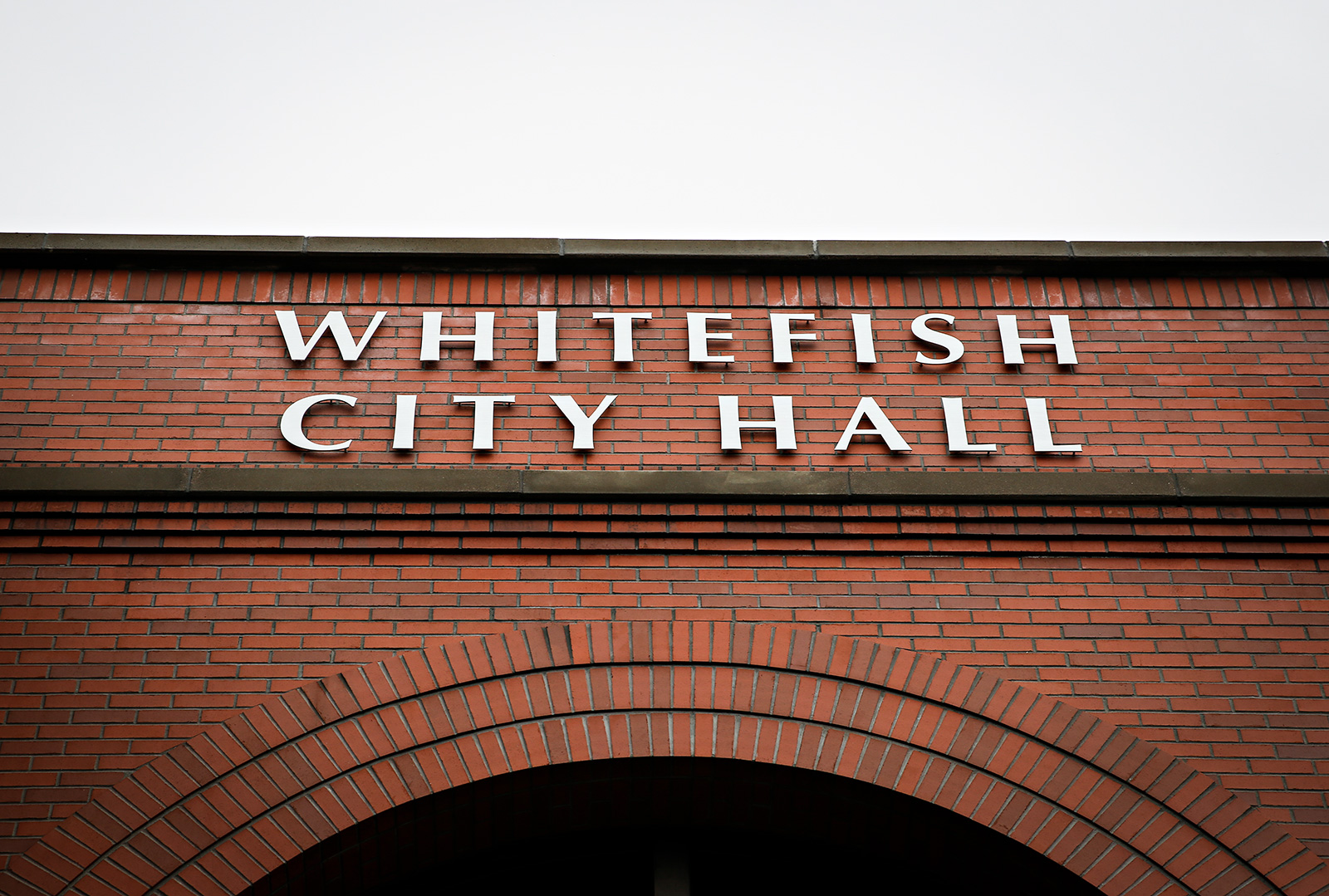Whitefish to Hold Pair of Growth Policy ‘Visioning Sessions’
The two meetings, with identical agendas, will involve breaking attendees up into small groups for mapping exercises and discussion about growth and development over the next 20 years
By Mike Kordenbrock
As part of the multi-year process to update its growth policy, a planning document intended to guide the city through growth and development over a 20-year-period, Whitefish’s planning department is hosting two meetings at city hall this week to facilitate members of the public both forming and sharing their visions for the city.
Called “visioning sessions,” the two meetings will follow an identical agenda, and the duplicative meetings are intended to accommodate people who may or may not be able to make one meeting due to their schedule. The visioning sessions are supposed to be part of a process that helps a community form a mental picture of the future it wants, to establish shared values, and to define what makes it special and how to protect valuable assets, according to a presentation given to the city’s development board at a Feb. 15 work session.
The visioning session meetings are on Feb. 21 and Feb. 22 and will go from 5:30 to 7:30 p.m. The meetings will start with a presentation on the growth policy and some results of online polls that have been conducted as part of the growth policy rewrite, an effort that the city is referring to as Vision Whitefish 2045.
After those presentations wrap up, attendees will be broken up into five different groups, and accompanied by different planning department staff members to different meeting spaces in city hall, where they will begin working on a mapping exercise. Alan Tiefenbach, a long range planner with the city who is leading the growth policy update, described the mapping exercise as an activity in which people will have access to large markers and maps, which they will use to respond to prompts, including marking favorite things and landmarks, and answering questions like what areas they think could change or would be appropriate for change, or where do you see annexation occurring in the next 20 years.
That portion of the meeting is expected to run from 6 p.m. to 6:30 p.m. After the mapping exercises wrap up, there will be a group discussion, which will include opportunities to try as a group to describe the city in a paragraph, what they think the city will look like in 20 years, and whether or not they think the city’s current growth policy vision statement is still pertinent.
By 7 p.m., the five groups will reconvene, and staff will present on the results of the mapping exercise and discussion.
The results of these two meetings will be used to help guide staff as they continue to work on a general vision statement that, when incorporated into the growth policy, will attempt to establish community values and help guide the growth policy’s direction.
Visioning is an early step in what is expected to be a multi-year process, and the upcoming meetings are supposed to be the first attempt at a publicly driven 20,000-foot view of the city, according to Tiefenbach.
During a meeting last week Tiefenbach encouraged members of the development board to attend, but said they won’t have any concrete responsibilities at the visioning sessions, but may be asked to answer questions from members of the public. The development board, under state statute, is the entity empowered to prepare the growth policy.
In the future, city staff will hold visioning sessions for specific geographic areas of the city, which will also include mapping exercises and discussions, but with more specific focus on neighborhoods and areas of town.
Some steps in the growth policy update process will occur concurrently. Tiefenbach said that staff are continuing to gather information on existing conditions in the city, and that there is also work being done, including by a contractor, to analyze the city’s future economic development.
The city’s growth policy update could take on increased significance if the Senate Bill 382, called the Montana Land Use Planning Act, withstands ongoing legal challenges. SB 382, which was sponsored by Columbus Republican Sen. Forest Mandeville and signed into law in May, is a 53-page law, which is expected to significantly change how developments are approved, including in Whitefish.
The law requires a growth policy for any city of over 5,000 people in a county of over 70,000 people. Under SB 382, local government is to emphasize public participation and comment during the creation or updating of its growth policy. The law further stipulates that once growth policy or regulations are adopted, review of site-specific developments are to occur at the city staff level.
“The Montana state statute said, in May, that there aren’t going to be public meetings anymore for site-specific developments. So, going to planning commission meetings about an apartment complex, or going to a planning commission meeting about some other site-specific development, the Montana state statute says you don’t get to do that anymore,” Tiefenbach said in August at a packed kickoff meeting for the growth policy update. “What you have to do is you have to get the public involved with the growth policy, you have to then write your zoning regulations and your subdivision regulations with the public, and when all these are done, if somebody comes in to build and that meets what the zoning and the growth policy is, you have to look at that and either approve it or deny it at the staff level. There is no public meeting.”